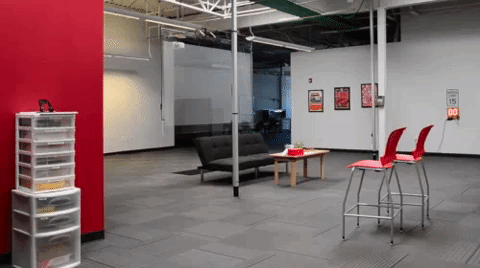Cthulhu Shield
The Cthulhu Shield is the worlds first open source sensory substitution and sensory augmentation development platform! Sensory substitution is the name that has been given to tools and techniques that take sensory information you would normally receive on one sensory organ, and presents that information in another form to another sensory organ. Your brain then figures out what to do with this information and translates it into usable data. The Cthulhu Shield lets anyone experiment and make devices that can expand your sensory experience! This input device attaches directly into a 5V Arduino development board, enabling it to electrically activate nerve endings in your tongue (yup, your tongue) through an array of 18 electrodes with the included Flexible Electrode Array.
This type of "tongue I/O" could be extremely useful to replace senses that are weakened or absent, and could even be employed for augmentation, such as sensing infrared or ultrasonic signals for example, or receiving updates from the Internet. Using an 18 electrode grid to tactilely display signals on the tongue, the electrodes on the array can be activated with patterns of electrical pulses to depolarize nerve membranes in the tongue to create different types of touch sensations. You can use these touch sensations to draw shapes or simple images on the tongue, feel different sound frequencies, receive turn by turn directions with your tongue, send keystrokes to your computer, control the cursor, or even control a mobility device. Additionally, the Cthulhu Shield can sense whether or not your tongue is in contact with different electrodes using capacitive sensing.
You can attach other SparkFun sensors to your Arduino, like a small pressure sensor to use the Cthulhu to feel the force you are exerting on an object if you have nerve damage in your hands or are wearing thick gloves. Many people have used tongue stimulation to improve their sense of balance as well by using pressure sensors or accelerometers.
Note: The Cthulhu shield requires a Arduino R3 compatible device to work. Like the SparkFun RedBoard or SparkFun RedBoard Qwiic purchased separately.
- 1x Cthulhu Shield
- 1x Flexible Electrode Array
- 1x Ground Cable
- RC network attached to I/O pins to generate biphasic waveform
- Visual LED grid to display electrode activation
- Open source hardware & software
- Cthulhu Arduino Library
- Example source code for Arduino, processing, and Android
Cthulhu Shield Product Help and Resources
Resources and Going Further
Check out the "Enginursday: A New Sensory Experience with the Cthulhu Shield" for more ideas!
Core Skill: DIY
Whether it's for assembling a kit, hacking an enclosure, or creating your own parts; the DIY skill is all about knowing how to use tools and the techniques associated with them.
Skill Level: Noob - Basic assembly is required. You may need to provide your own basic tools like a screwdriver, hammer or scissors. Power tools or custom parts are not required. Instructions will be included and easy to follow. Sewing may be required, but only with included patterns.
See all skill levels
Core Skill: Programming
If a board needs code or communicates somehow, you're going to need to know how to program or interface with it. The programming skill is all about communication and code.
Skill Level: Rookie - You will need a better fundamental understand of what code is, and how it works. You will be using beginner-level software and development tools like Arduino. You will be dealing directly with code, but numerous examples and libraries are available. Sensors or shields will communicate with serial or TTL.
See all skill levels
Core Skill: Electrical Prototyping
If it requires power, you need to know how much, what all the pins do, and how to hook it up. You may need to reference datasheets, schematics, and know the ins and outs of electronics.
Skill Level: Rookie - You may be required to know a bit more about the component, such as orientation, or how to hook it up, in addition to power requirements. You will need to understand polarized components.
See all skill levels
Comments
Looking for answers to technical questions?
We welcome your comments and suggestions below. However, if you are looking for solutions to technical questions please see our Technical Assistance page.
Customer Reviews
No reviews yet.









Origin and theory of operation: https://doi.org/10.1016/j.scient.2011.08.020